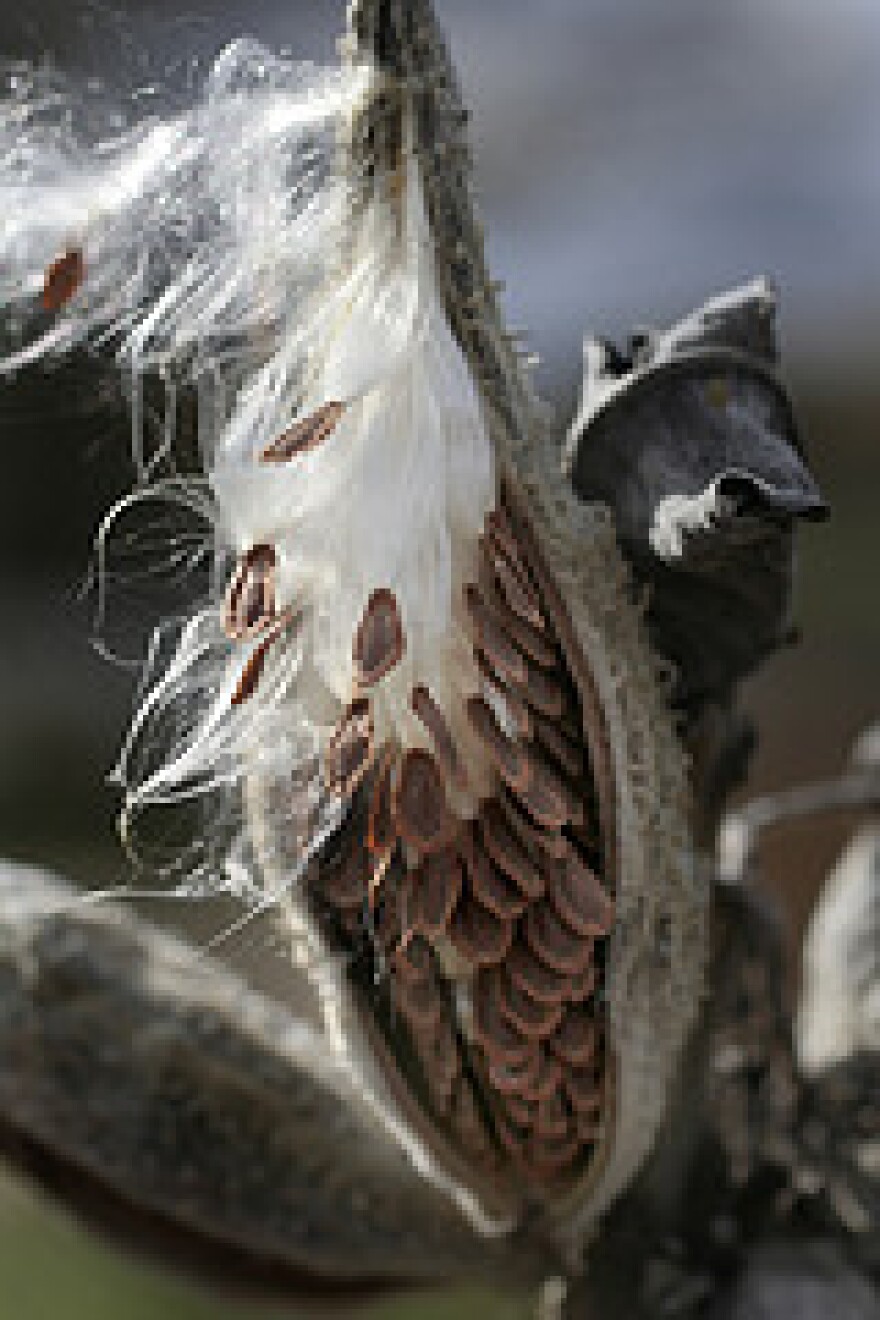Poor Will’s Almanack for the Second Week of Early Fall.
This is the time when milkweed pods come open, spilling their sleek and silvery seeds in the fields. The milkweed says that frost season is on the way, and that Canadian geese, great-crested flycatchers, blue-gray gnatcatchers, ruby-throated hummingbirds, eastern wood peewees and bank swallows are moving down their flyways toward the Gulf of Mexico. Buzzards gather at their roosts. Crows are the only birds to call before dawn.
Monarch butterflies become more numerous now. They still visit the late phlox and the zinnias in the afternoon sun; other insects, however, become less common in the field and garden as the number of pollen-bearing flowers dwindles. Spiders understand; they weave fewer webs. Bees compete for the remaining nectar. Winter’s craneflies swarm, a fraction of their December size.
When milkweed pods open, peak leaf coloration starts in northern New England. In the Mid-Atlantic States, fallen leaves begin to cover the undergrowth, and the canopy is visibly thinning. Honey locusts are half yellow, buckeyes in the middle of full leafdrop. Hickories are gold, like the ashes. The first white mulberry, sycamore and cottonwood leaves have come down in the wind.
Barberries are red, and rose hips have turned alongside them. Touch-me-nots are still blooming, but their foliage deteriorates. Late Summer’s clearweed has green seeds. Older wingstem and ironweed are done blossoming. Wild lettuce leaves are stained with decay. Queen Anne's lace and bright blue chicory die back suddenly. The first goldenrod is brown. White vervain is streaked with maroon, tattered, laced from insects. Boneset is rusting. Beggarticks are ready to stick to your clothing. Roadside sunflowers and Jerusalem artichokes enter their final week.
Next week on Poor Will’s Almanack: notes for the Third Week of Early Fall. In the meantime, get up a little before sunrise to find Orion filling the southern sky, forecasting the cold to come.
Poor Will’s Almanack for 2012, fourteen months and 300 pages of seasonal essays, notes on farming and gardening, weather, phenology, astronomical information, puzzles with cash prizes, and reader stories is now available. More information can be found at poorwillsalmanack.com.



